1,339 Quite Interesting Facts to Make Your Jaw Drop is bursting with mindboggling morsels of trivia informative, hilarious, sometimes arcane or utterly useless, but always entertaining.
Did you know?
Wagner only ever wore pink silk underwear.
There are 34,000 statues of Kim Il Sung in North Korea.
There is a cult in Malaysia that worships a giant teapot.
Earthworms have five hearts.
Your eyebrows renew themselves every 64 days.
Charles Darwin's tortoise Harriet died in 2006 at the age of 176.
Every fact in this magnificent little volume has been researched with punctilious care in order to bring you the truth in its purest form.
An impassioned, erudite, thoroughly researched, and beautifully reasoned book—from one of the most admired religious thinkers of our time—that argues not only that science and religion are compatible, but that they complement each other—and that the world needs both.
“Atheism deserves better than the new atheists,” states Rabbi Jonathan Sacks, “whose methodology consists of criticizing religion without understanding it, quoting texts without contexts, taking exceptions as the rule, confusing folk belief with reflective theology, abusing, mocking, ridiculing, caricaturing, and demonizing religious faith and holding it responsible for the great crimes against humanity. Religion has done harm; I acknowledge that. But the cure for bad religion is good religion, not no religion, just as the cure for bad science is good science, not the abandonment of science.”
Rabbi Sacks’s counterargument is that religion and science are the two essential perspectives that allow us to see the universe in its three-dimensional depth. Science teaches us where we come from. Religion explains to us why we are here. Science is the search for explanation. Religion is the search for meaning. We need scientific explanation to understand nature. We need meaning to understand human behavior. There have been times when religion tried to dominate science. And there have been times, including our own, when it is believed that we can learn all we need to know about meaning and relationships through biochemistry, neuroscience, and evolutionary psychology. In this fascinating look at the interdependence of religion and science, Rabbi Sacks explains why both views are tragically wrong.
She uncovers the surprising roots of hot button issues, from teacher tenure to charter schools, and finds that recent popular ideas to improve schools—instituting merit pay, evaluating teachers by student test scores, ranking and firing veteran teachers, and recruiting “elite” graduates to teach—are all approaches that have been tried in the past without producing widespread change. And she also discovers an emerging effort that stands a real chance of transforming our schools for the better: drawing on the best practices of the three million public school teachers we already have in order to improve learning throughout our nation’s classrooms.
The Teacher Wars upends the conversation about American education by bringing the lessons of history to bear on the dilemmas we confront today. By asking “How did we get here?” Dana Goldstein brilliantly illuminates the path forward.
Did you know?
Wagner only ever wore pink silk underwear.
There are 34,000 statues of Kim Il Sung in North Korea.
There is a cult in Malaysia that worships a giant teapot.
Earthworms have five hearts.
Your eyebrows renew themselves every 64 days.
Charles Darwin's tortoise Harriet died in 2006 at the age of 176.
Every fact in this magnificent little volume has been researched with punctilious care in order to bring you the truth in its purest form.
An impassioned, erudite, thoroughly researched, and beautifully reasoned book—from one of the most admired religious thinkers of our time—that argues not only that science and religion are compatible, but that they complement each other—and that the world needs both.
“Atheism deserves better than the new atheists,” states Rabbi Jonathan Sacks, “whose methodology consists of criticizing religion without understanding it, quoting texts without contexts, taking exceptions as the rule, confusing folk belief with reflective theology, abusing, mocking, ridiculing, caricaturing, and demonizing religious faith and holding it responsible for the great crimes against humanity. Religion has done harm; I acknowledge that. But the cure for bad religion is good religion, not no religion, just as the cure for bad science is good science, not the abandonment of science.”
Rabbi Sacks’s counterargument is that religion and science are the two essential perspectives that allow us to see the universe in its three-dimensional depth. Science teaches us where we come from. Religion explains to us why we are here. Science is the search for explanation. Religion is the search for meaning. We need scientific explanation to understand nature. We need meaning to understand human behavior. There have been times when religion tried to dominate science. And there have been times, including our own, when it is believed that we can learn all we need to know about meaning and relationships through biochemistry, neuroscience, and evolutionary psychology. In this fascinating look at the interdependence of religion and science, Rabbi Sacks explains why both views are tragically wrong.
In her ground-breaking history of 175 years of American, Dana Goldstein finds answers in the past to the controversies that plague our public schools today.
Teaching is a wildly contentious profession in America, one attacked and admired in equal measure. In The Teacher Wars, a rich, lively, and unprecedented history of public school teaching, Dana Goldstein reveals that teachers have been similarly embattled for nearly two centuries. From the genteel founding of the common schools movement in the nineteenth century to the violent inner-city teacher strikes of the 1960s and '70s, from the dispatching of Northeastern women to frontier schoolhouses to the founding of Teach for America on the Princeton University campus in 1989, Goldstein shows that the same issues have continued to bedevil us: Who should teach? What should be taught? Who should be held accountable for how our children learn?
Teaching is a wildly contentious profession in America, one attacked and admired in equal measure. In The Teacher Wars, a rich, lively, and unprecedented history of public school teaching, Dana Goldstein reveals that teachers have been similarly embattled for nearly two centuries. From the genteel founding of the common schools movement in the nineteenth century to the violent inner-city teacher strikes of the 1960s and '70s, from the dispatching of Northeastern women to frontier schoolhouses to the founding of Teach for America on the Princeton University campus in 1989, Goldstein shows that the same issues have continued to bedevil us: Who should teach? What should be taught? Who should be held accountable for how our children learn?
She uncovers the surprising roots of hot button issues, from teacher tenure to charter schools, and finds that recent popular ideas to improve schools—instituting merit pay, evaluating teachers by student test scores, ranking and firing veteran teachers, and recruiting “elite” graduates to teach—are all approaches that have been tried in the past without producing widespread change. And she also discovers an emerging effort that stands a real chance of transforming our schools for the better: drawing on the best practices of the three million public school teachers we already have in order to improve learning throughout our nation’s classrooms.
The Teacher Wars upends the conversation about American education by bringing the lessons of history to bear on the dilemmas we confront today. By asking “How did we get here?” Dana Goldstein brilliantly illuminates the path forward.
To the amusement of the pundits and the regret of the electorate, our modern political jargon has become even more brazenly two-faced and obfuscatory than ever. Where once we had Muckrakers, now we have Bed-Wetters. Where Blue Dogs once slept peaceably in the sun, Attack Dogs now roam the land. During election season--a near constant these days--the coded rhetoric of candidates and their spin doctors, and the deliberately meaningless but toxic semiotics of the wing nuts and backbenchers, reach near-Orwellian levels of self-satisfaction, vitriol, and deceit. The average NPR or talk radio listener, MSNBC or Fox News viewer, or blameless New York Times or Wall Street Journal reader is likely to be perplexed, nonplussed, and lulled into a state of apathetic resignation and civic somnolence by the rapid-fire incomprehensibility of political pronouncement and commentary--which is, frankly, putting us exactly where the pundits want us.
Dog Whistles, Walk-Backs, and Washington Handshakes is a tonic and a corrective. It is a reference and field guide to the language of politics by two veteran observers that not only defines terms and phrases but also explains their history and etymology, describes who uses them against whom, and why, and reveals the most telling, infamous, amusing, and shocking examples of their recent use. It is a handbook of lexicography for the Wonkette and This Town generation, a sleeker, more modern Safire's Political Dictionary, and a concise, pointed, bipartisan guide to the lies, obfuscations, and helical constructions of modern American political language, as practiced by real-life versions of the characters on House of Cards.
In his bestselling 23 Things They Don't Tell You About Capitalism, Cambridge economist Ha-Joon Chang brilliantly debunked many of the predominant myths of neoclassical economics. Now, in an entertaining and accessible primer, he explains how the global economy actually works—in real-world terms. Writing with irreverent wit, a deep knowledge of history, and a disregard for conventional economic pieties, Chang offers insights that will never be found in the textbooks.
Unlike many economists, who present only one view of their discipline, Chang introduces a wide range of economic theories, from classical to Keynesian, revealing how each has its strengths and weaknesses, and why there is no one way to explain economic behavior. Instead, by ignoring the received wisdom and exposing the myriad forces that shape our financial world, Chang gives us the tools we need to understand our increasingly global and interconnected world often driven by economics. From the future of the Euro, inequality in China, or the condition of the American manufacturing industry here in the United States—Economics: The User’s Guide is a concise and expertly crafted guide to economic fundamentals that offers a clear and accurate picture of the global economy and how and why it affects our daily lives.
Unlike many economists, who present only one view of their discipline, Chang introduces a wide range of economic theories, from classical to Keynesian, revealing how each has its strengths and weaknesses, and why there is no one way to explain economic behavior. Instead, by ignoring the received wisdom and exposing the myriad forces that shape our financial world, Chang gives us the tools we need to understand our increasingly global and interconnected world often driven by economics. From the future of the Euro, inequality in China, or the condition of the American manufacturing industry here in the United States—Economics: The User’s Guide is a concise and expertly crafted guide to economic fundamentals that offers a clear and accurate picture of the global economy and how and why it affects our daily lives.
A 2006 report commissioned by Brown University revealed that institution’s complex and contested involvement in slavery—setting off a controversy that leapt from the ivory tower to make headlines across the country. But Brown’s troubling past was far from unique. In Ebony and Ivy, Craig Steven Wilder, a leading historian of race in America, lays bare uncomfortable truths about race, slavery, and the American academy.
Many of America’s revered colleges and universities—from Harvard, Yale, and Princeton to Rutgers, Williams College, and the University of North Carolina—were soaked in the sweat, the tears, and sometimes the blood of people of color. The earliest academies proclaimed their mission to Christianize the “savages” of North America and played a key role in white conquest. Later, the slave economy and higher education grew up together, each nurturing the other. Slavery funded colleges, built campuses, and paid the wages of professors. Enslaved Americans waited on faculty and students; academic leaders aggressively courted the support of slave owners and slave traders. Significantly, as Wilder shows, our leading universities were dependent on human bondage and became breeding grounds for the racist ideas that sustained it.
Ebony and Ivy is a powerful and propulsive study and the first of its kind, revealing a history of oppression behind the institutions usually considered the cradle of liberal politics.
Many of America’s revered colleges and universities—from Harvard, Yale, and Princeton to Rutgers, Williams College, and the University of North Carolina—were soaked in the sweat, the tears, and sometimes the blood of people of color. The earliest academies proclaimed their mission to Christianize the “savages” of North America and played a key role in white conquest. Later, the slave economy and higher education grew up together, each nurturing the other. Slavery funded colleges, built campuses, and paid the wages of professors. Enslaved Americans waited on faculty and students; academic leaders aggressively courted the support of slave owners and slave traders. Significantly, as Wilder shows, our leading universities were dependent on human bondage and became breeding grounds for the racist ideas that sustained it.
Ebony and Ivy is a powerful and propulsive study and the first of its kind, revealing a history of oppression behind the institutions usually considered the cradle of liberal politics.
The budget battles of recent years have amplified the warnings of demographic doomsayers who predicted that a wave of baby boomers would bleed America dry, bankrupting Social Security and Medicare as they faded into an impoverished old age. On the contrary, argues award-winning journalist Chris Farrell, we are instead on the verge of a broad, positive transformation of our economy and society.
The old idea of “retirement”—a word that means withdrawal, describing a time when people gave up productive employment and shrank their activities—was a short-lived historical anomaly. Humans have always found meaning and motivation in work and community, Farrell notes, and the boomer generation, poised to live longer in better health than any before, is already discovering unretirement—extending their working lives, often with new careers, entrepreneurial ventures, and volunteer service. Their experience, wisdom—and importantly, their continued earnings—will enrich the American workplace, treasury, and our whole society in the decades to come.
Unretirement not only explains this seismic change, now in its early stages, it provides key insights and practical advice for boomers about to navigate this exciting, but unsettled, new frontier. Drawing on Chris Farrell’s decades of covering personal finance and economics for Bloomberg Businessweek and Marketplace Money, this will be an indispensable guide to the landscape of unretirement from one of America’s most trusted experts.
Rich, absorbing, and exotic--City of Lies travels up and down Vali Asr Street, Tehran's pulsing thoroughfare, from the lavish shopping malls of Tajrish through the smog that lingers over the alleyways and bazaars of the city's southern districts.
The old idea of “retirement”—a word that means withdrawal, describing a time when people gave up productive employment and shrank their activities—was a short-lived historical anomaly. Humans have always found meaning and motivation in work and community, Farrell notes, and the boomer generation, poised to live longer in better health than any before, is already discovering unretirement—extending their working lives, often with new careers, entrepreneurial ventures, and volunteer service. Their experience, wisdom—and importantly, their continued earnings—will enrich the American workplace, treasury, and our whole society in the decades to come.
Unretirement not only explains this seismic change, now in its early stages, it provides key insights and practical advice for boomers about to navigate this exciting, but unsettled, new frontier. Drawing on Chris Farrell’s decades of covering personal finance and economics for Bloomberg Businessweek and Marketplace Money, this will be an indispensable guide to the landscape of unretirement from one of America’s most trusted experts.
Rich, absorbing, and exotic--City of Lies travels up and down Vali Asr Street, Tehran's pulsing thoroughfare, from the lavish shopping malls of Tajrish through the smog that lingers over the alleyways and bazaars of the city's southern districts.
Ramita Navai gives voice to ordinary Iranians forced to live extraordinary lives: the porn star, the aging socialite, the assassin and enemy of the state who ends up working for the Republic, the dutiful housewife who files for divorce, and the old-time thug running a gambling den.
In today's Tehran, intrigues abound and survival depends on an intricate network of falsehoods: mullahs visit prostitutes, local mosques train barely pubescent boys in crowd control tactics, and cosmetic surgeons promise to restore girls' virginity. Navai paints an intimate portrait of those discreet recesses in a city where the difference between modesty and profanity, loyalty and betrayal, honor and disgrace is often no more than the believability of a lie.
In today's Tehran, intrigues abound and survival depends on an intricate network of falsehoods: mullahs visit prostitutes, local mosques train barely pubescent boys in crowd control tactics, and cosmetic surgeons promise to restore girls' virginity. Navai paints an intimate portrait of those discreet recesses in a city where the difference between modesty and profanity, loyalty and betrayal, honor and disgrace is often no more than the believability of a lie.
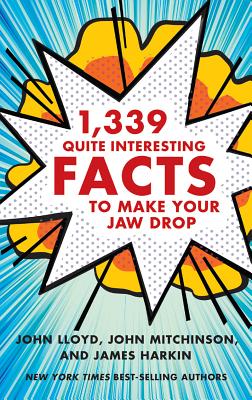
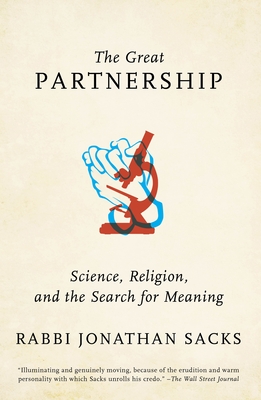
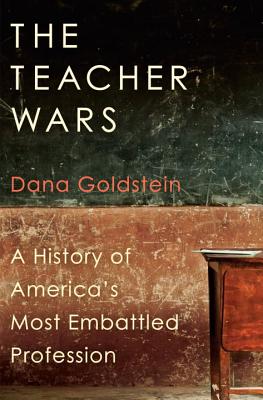
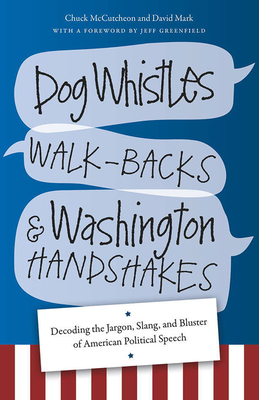
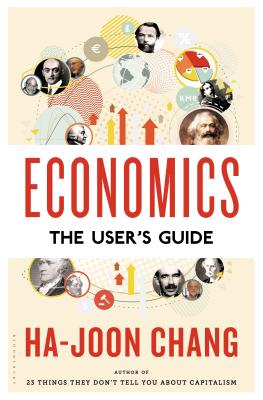
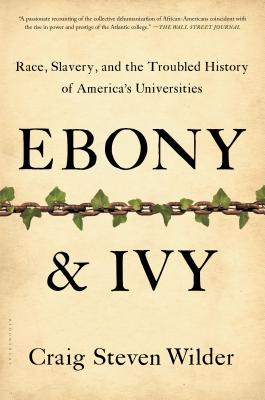
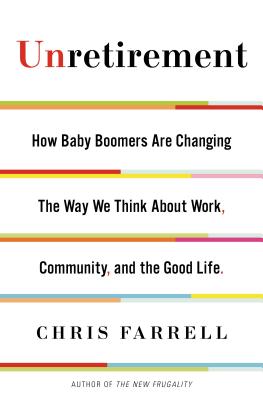

No comments:
Post a Comment